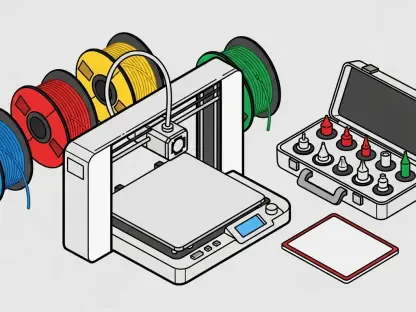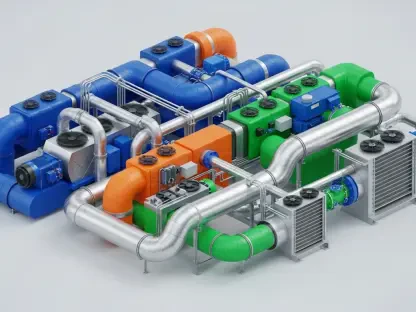Imagine a world where every piece of packaging on store shelves must meet strict environmental standards, not by choice but by law, and with global plastic production exceeding 400 million tons annually, of which only a mere 9% is recycled, the urgency for sustainable packaging has never been more apparent. This roundup dives into the seismic shift from voluntary green initiatives to mandatory regulations, as forecasted by leading industry insights. By gathering perspectives from various industry leaders and analysts, this article explores the challenges, strategies, and implications of this transition, aiming to provide a comprehensive view of what lies ahead for manufacturers navigating regulated sustainability.
Exploring the Move Toward Regulated Packaging Standards
Industry forecasts suggest a significant pivot in the packaging sector, with many organizations expected to move away from self-imposed sustainability goals to compliance with formal mandates within the next few years. This shift is driven by mounting environmental concerns and increasing governmental oversight, fundamentally altering how businesses prioritize their operations. Analysts emphasize that this is not merely a trend but a necessary evolution as pressures mount.
Differing views exist on the readiness of companies to adapt to such changes. Some industry observers highlight that while voluntary commitments have spurred innovation, they often fall short due to unrealistic targets. Others argue that regulatory frameworks will provide the much-needed structure to enforce accountability, pushing firms to align with global environmental objectives.
A key point of discussion is how this transition will reshape business landscapes worldwide. Insights gathered from supply chain experts suggest that the focus will increasingly be on navigating legislative complexities rather than showcasing optional green credentials. This roundup aims to unpack these varied perspectives, shedding light on the path forward.
Challenges in Adopting Sustainable Packaging
Progress and Pressures in Adoption Rates
Sustainable packaging adoption has seen notable growth in recent years, with many companies integrating eco-friendly materials into their operations. However, the strain of meeting ambitious self-imposed targets remains a significant hurdle. Industry data indicates that a substantial percentage of public sustainability commitments are at risk of remaining unmet due to persistent reliance on traditional materials like plastics.
Analysts point out that the tension between voluntary initiatives and impending regulatory mandates creates a complex environment for manufacturers. Some express skepticism about the feasibility of current corporate goals without stricter enforcement. This perspective underscores the need for a balanced approach that combines innovation with realistic timelines.
Another angle focuses on external pressures, such as consumer expectations and environmental advocacy, driving faster adoption. Yet, the consensus among industry watchers is that without systemic support, progress will continue to lag. These insights reveal a critical gap between intention and execution in the sustainability journey.
Legislative Waves and Environmental Realities
Regulations are tightening globally, with policies like the European Union’s mandate for fully recyclable plastic packaging setting a high bar for compliance. This legislative push contrasts sharply with the grim reality of plastic waste, where millions of tons remain unrecycled each year. Various industry stakeholders note that such mandates are both a challenge and an opportunity for transformation.
Major corporations, including beverage giants, struggle with their contributions to plastic waste despite robust sustainability pledges. Feedback from retail and consumer goods sectors highlights barriers like inadequate infrastructure as significant obstacles. Some argue that without addressing these systemic issues, regulations alone may not yield the desired impact.
On the flip side, certain industry voices see stricter laws as a catalyst for innovation. They suggest that aligning with regulations early can position companies as leaders in sustainability, potentially mitigating risks of non-compliance. This diversity in opinion illustrates the complex interplay between policy and practical implementation on a global scale.
Extended Producer Responsibility (EPR) as a Game-Changer
EPR policies are emerging as a pivotal mechanism, holding producers accountable for the lifecycle of their packaging waste. In the United States, multiple states are rolling out such legislation, with frameworks designed to ensure financial and operational responsibility. Industry insights reveal a growing recognition of EPR as a driver for change.
Regional differences in EPR implementation add layers of complexity, with some areas involving Producer Responsibility Organizations to streamline compliance. Financial implications, such as fees and operational adjustments, are a point of contention. While some view these as burdens, others see them as necessary investments for long-term environmental benefits.
A contrasting perspective emphasizes EPR’s potential to spur creativity in packaging design and waste management. Industry leaders note that rethinking product lifecycles under these policies could lead to groundbreaking solutions. This viewpoint challenges the narrative of EPR as merely a cost, reframing it as a strategic opportunity.
Financial Strains and Strategic Needs
Compliance with new packaging regulations brings significant cost implications, from fees to supply chain overhauls. Analysts across the board agree that many organizations are currently unprepared, lacking the necessary tools for data management and reporting. This unpreparedness could lead to substantial financial penalties if not addressed promptly.
Some industry perspectives highlight the need for a strategic overhaul, including accelerating packaging redesign cycles that often span several years. The focus is on integrating legislative requirements into core business planning. This approach, though resource-intensive, is seen by some as essential to maintaining market competitiveness.
Others speculate that these cost pressures might redefine industry dynamics, favoring companies that innovate sustainably. The potential for long-term gains through eco-friendly practices is a recurring theme in discussions. These varied insights underscore the urgency of balancing immediate financial burdens with future-oriented strategies.
Strategies for Navigating Mandatory Packaging Rules
Industry leaders and analysts offer a range of strategies to help businesses adapt to the inevitability of regulatory compliance. A common recommendation is to educate internal teams across departments about the risks and impacts of EPR frameworks. This foundational step ensures that all facets of an organization are aligned with upcoming mandates.
Collaboration emerges as another critical tactic, with emphasis on building networks across supply chains to source sustainable materials and establish efficient return channels. Some experts stress the importance of open dialogue with suppliers and partners to tackle shared challenges. This collective approach is seen as a way to distribute the burden of compliance more effectively.
Finally, integrating legislative considerations into product design and development is a widely advocated strategy. Insights suggest starting with small, actionable steps like auditing current packaging data while planning for broader systemic changes. These diverse tips highlight the multifaceted effort required to avoid market access loss and maintain profitability.
Looking Back and Moving Forward
Reflecting on the discussions, it was evident that the shift from voluntary to mandatory sustainable packaging had sparked intense debate among industry stakeholders. The insights gathered painted a picture of an industry at a crossroads, grappling with regulatory pressures and financial stakes while striving for environmental accountability.
Looking ahead, companies were encouraged to take proactive measures by investing in circularity and materials compatible with existing infrastructure. A focus on building robust data management systems was seen as vital to navigating EPR requirements. These steps were viewed as critical to turning compliance challenges into competitive advantages.
Beyond immediate actions, there was a shared understanding that fostering innovation in packaging design could yield significant long-term benefits. Businesses were urged to explore partnerships and industry collaborations to stay ahead of evolving regulations. This forward-thinking mindset was considered essential for shaping a sustainable future in packaging.









